There has been some discussion on the gnome-uk list about what we’d like to do at LinuxWorld, London. I’m not going to be organising it this year as having done it for the last few years, I want to give someone else the opportunity. So if you live in or around London and are passionate about GNOME, please consider organising this little event! Just drop an e-mail along to the gnome-uk mailing list to let people know you want to help out.
Month: August 2007
Unnamed Project
I had an idea that I have been thinking about the last few weeks and today I finally got round to doing some hacking…
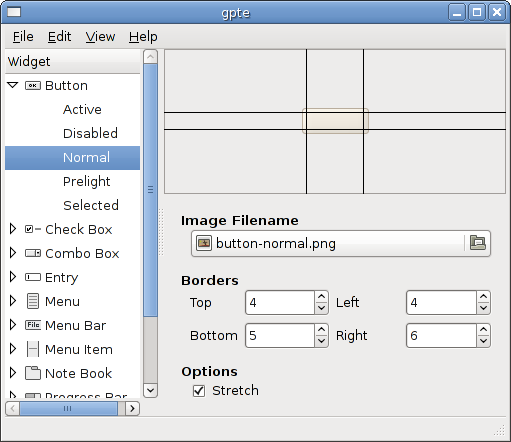
I really need a better name for this little project. If you can guess what it is, please help me.
OpenMoko 2007.2
Sean has made his announcement, so I’ll take a little bit of time to explain what happened.
We (myself and assorted others) at OpenedHand have been working with OpenMoko for the best part of a year now. We have been porting applications such as Contacts and Dates and helping develop new applications and libraries such as the Dialer and libmokojournal (an interface to the journal component of iCal, via ECal in Evolution data server).
About three or four months ago we noticed there was growing concern within the OpenMoko community about the GUI design. We had already noted some of the issues that were being raised, so we had a meeting at OpenedHand and discussed all the various problems and design issues and came up with some possible solutions.
Problems:
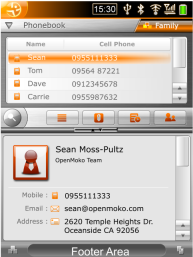 |
| Old style UI |
- The theme was over complicated and caused serious performance problems. We had already looked into various patches and workarounds, but it was still difficult to get good performance from it.
- The GUI design was not adapted for small screens with very high DPI. There was lots of padding and spacing between elements in the UI, which meant small hit target areas and an increased sense of clutter. There were also a lot of lines and borders which again meant the interface looked very cramped on a small screen.
- Most of the interface was not usable with a finger input method, it had to be used with a stylus. This was a particular problem because the Neo1973 does not have a stylus holder.
- The top and bottom panels were very small and not very effective. The footer was also redundant most of the time since very few applications used the “status” area.
- Scrolling was supposed to be implemented with a “scroll wheel”, but most users didn’t understand how this worked. Otherwise traditional scroll bars were used, which are often difficult to use on touch screens.
- The design for stylus applications was split into two panes, displayed on the screen at the same time with a toolbar through the middle. This meant that neither pane was very useful because it ended up being too small to fit on the screen once you included the on screen keyboard. The toolbar buttons were also small and it was unclear what they should apply to.
- Task management was difficult, as there was no way to switch between windows of a current application and there was no standard way of switching applications.
- The application framework was difficult to maintain and we often spent more time fixing the extra widgets rather than building our own applications.
Solutions:
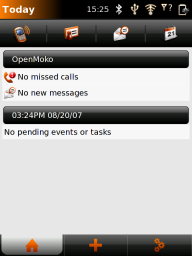 |
| New style UI |
One of our primary aims was to reduce the amount of extra widgets and framework built upon GTK+. Therefore, the theme design pulls on the strengths of GTK+ and the interface design can be implemented without using any custom widgets. This improves performance and cuts down on the amount of maintenance and bugs in the framework. We also worked on creating a set of guidelines, that would explain how developers should design and layout their applications in a consistent way.
- The theme was redesigned and made more suitable for the high DPI of the target screen. It was also made simpler which improves performance. There is also the possibility of using a custom GTK+ engine in the future to improve performance even further.
- Each application was split up into “pages” which represent a single interaction point such as browsing a list of contacts or dialing a number. This reduces the amount of information on the screen at once, providing a simpler and clearer interface.
- The toolbar was moved to the top of the screen and increased in size. This provides access to functions relevent to the current page
- A “switcher” was placed at the bottom of the screen that allows the user to switch to a different page. This is actually a standard GtkNotebook with the tabs displayed at the bottom.
- Scrolling would be possible by dragging a thumb or finger up and down the list. Chris has already mentioned his work on this.
- A new Today application that would incorporate a central place to start and manage applications as well as giving the normal overview on missed calls, unread messages, etc. This is quickly accessible from a hardware button on the Neo1973.
Over the last two months, we have re-written the Contacts, Dialer and Today applications to fit the new design. We are also working on a new version of Dates.
So now all the applications should be reasonably accessible with either using a finger or a stylus. The conversion path for “desktop to phone” should be a lot simpler and it will be fairly easy for anyone with GTK+ knowledge to start developing applications that will look and feel like they belong in OpenMoko.
Looking Forward (2)
In response to some of the comments on my last post about Online Desktop:
- I will be using completely Free Software and just as importantly, Free Services.
- I will be installing the services on my own server.
- There will be a solution to enable me to work off-line.
I have yet to hear one problem with Online Desktop that couldn’t be fixed. In fact, the idea of being able to store your settings and files online has been around for years. Now we get a chance to have a version based on Free Software principles. Still sounds great to me!
Interesting Things
A couple of interesting things are happening in the world of artwork themes at the moment:
- There was a meeting on the future of GTK+ themeing at Guadec
- Stephan Arts of XFCE is proposing a freedesktop.org specification for Theme Packages
- Bruno is doing a fantastic job at putting together a new website for art.gnome.org:
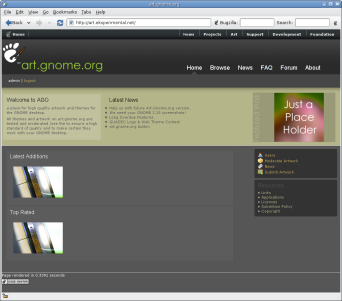
You can check his progress on this wiki page. - We have a new appearance capplet for GNOME 2.20:
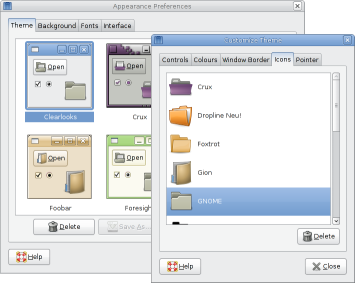
- We have a refreshed Clearlooks theme thanks Andrea Cimitan
- Many more tweaks and additions to the icon theme too from Andreas, Jakub, Lapo and others.
- And there are plenty of discussions about new artwork for GNOME, including a new GDM theme, background and new graphics for gnome-games!
Looking Forward
Two reasons I am looking forward to Online Desktop:
- I wont have to waste time setting up my IM/E-Mail client everytime I re-install my operating system, or move to a new computer
- I wont have to worry about which computer I saved my documents on when I take my just my laptop away from home
Default Wallpaper
As Andreas noted, at Guadec we discussed a couple of things about what we wanted to do with the various artwork in Gnome. One of the suggestions was to reduce the gnome-backgrounds module and provide a new default background instead. Jakub very kindly offered to take up the challenge and has come up with this first draft:

default-wallpaper-abstract.png (PNG Image, 1920 x 1200 pixels)
So the challenge is to try it out for a week and see if you still enjoy it at the end. Constructive and useful comments welcome.
Not sure yet what license this image will have, so please for the moment assume Copyright 2007 Jakub Steiner. Suggestions on what license would be most appropriate are welcome too.
Sato Has Landed!
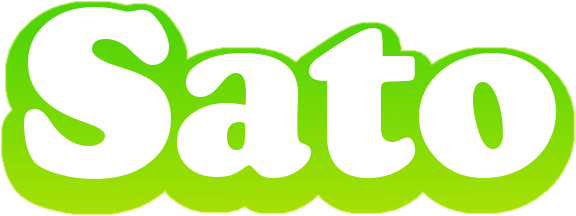
What is Sato?
Sato is a new visual style for Poky Linux, the embedded Linux distribution. It is designed to work well with screens at very high DPI and restricted size, such as those often found on smartphones and PDAs. Not to mention it is coded with efficiency and speed in mind so that it works smoothly on hand-held and other embedded hardware. It will easily sit neatly on top of any device using the GMAE stack to provide a well defined user experience.
So what’s new?
We (OpenedHand) have just released the very first version. We’ve released it with version number 0.1, which indicates that it is a testing release and we think there are still quite a few improvements to make before we think it is perfect. We know there are bugs and if you think you have found a new one, we would encourage you to report it.
What does it look like?
Take a look at the screenshots:
Why green?
What colour would you prefer?
How can I try it out?
The sources are available from the Poky Linux site, but it is included in the latest Poky release which is probably the best way to try it out.
Credits
- TakTak who drew the original icons for us (and released them under a Creative Commons Attribution–Share Alike 3.0 License)
- Andreas, who tweaked some of the icons, created missing ones and generally helped with suggestions about the theme
- Matthew, Ross and anyone else in OpenedHand who helped out
- And maybe I get to credit myself for writing the gtk-engine and compiling the icon theme



